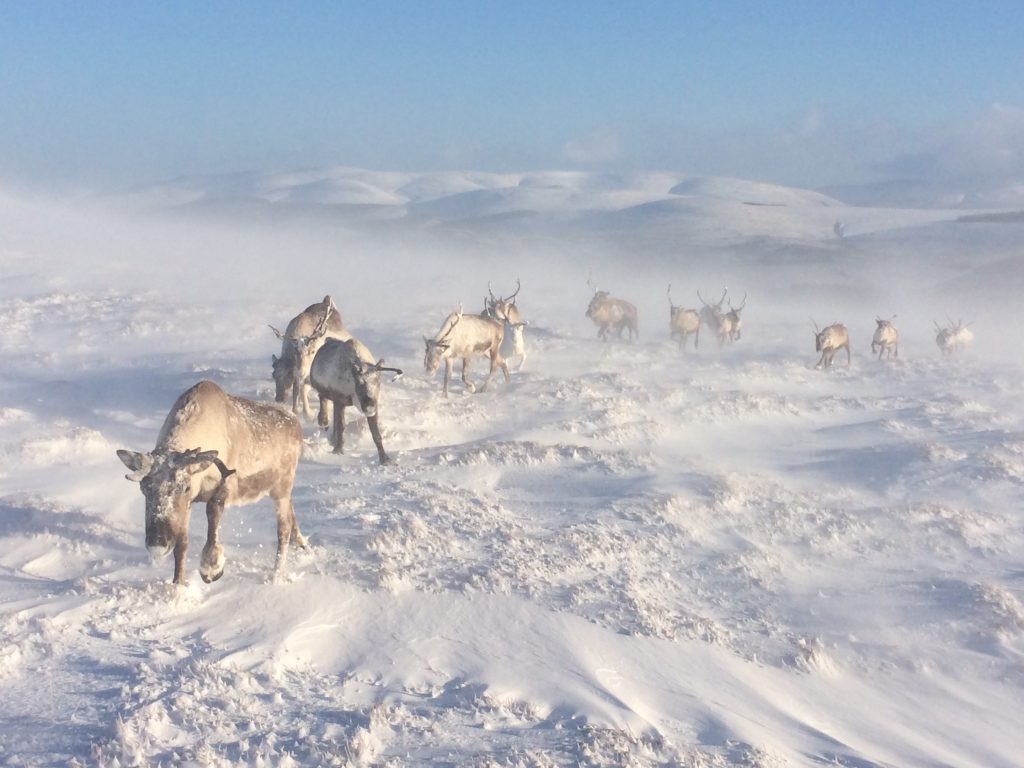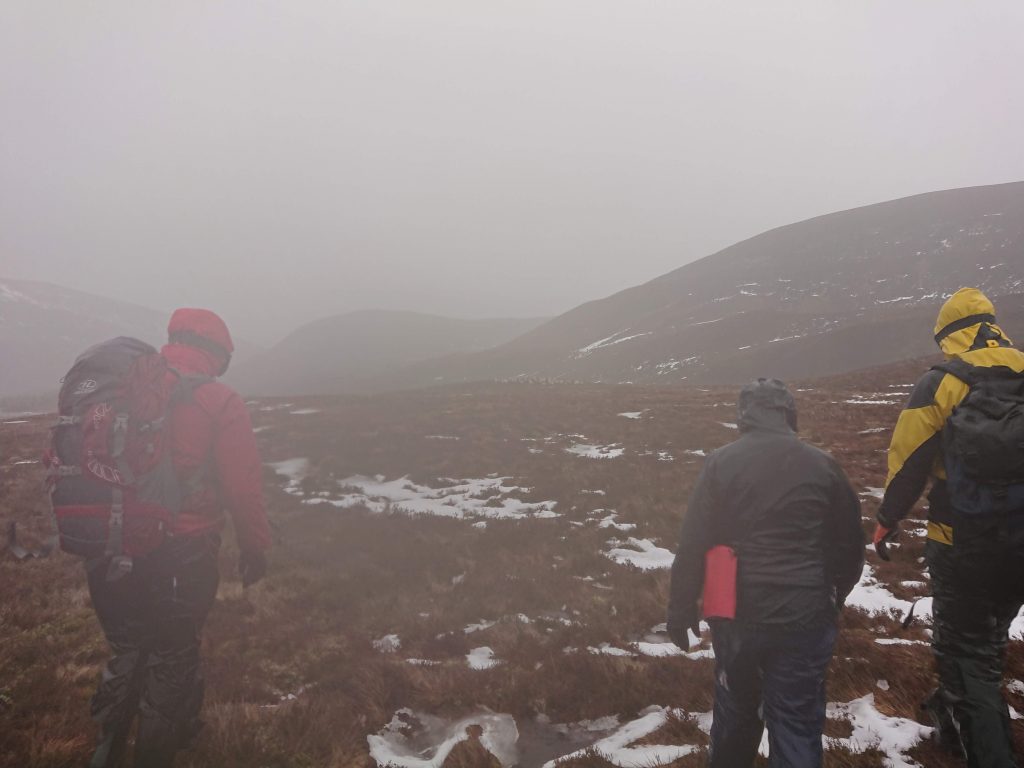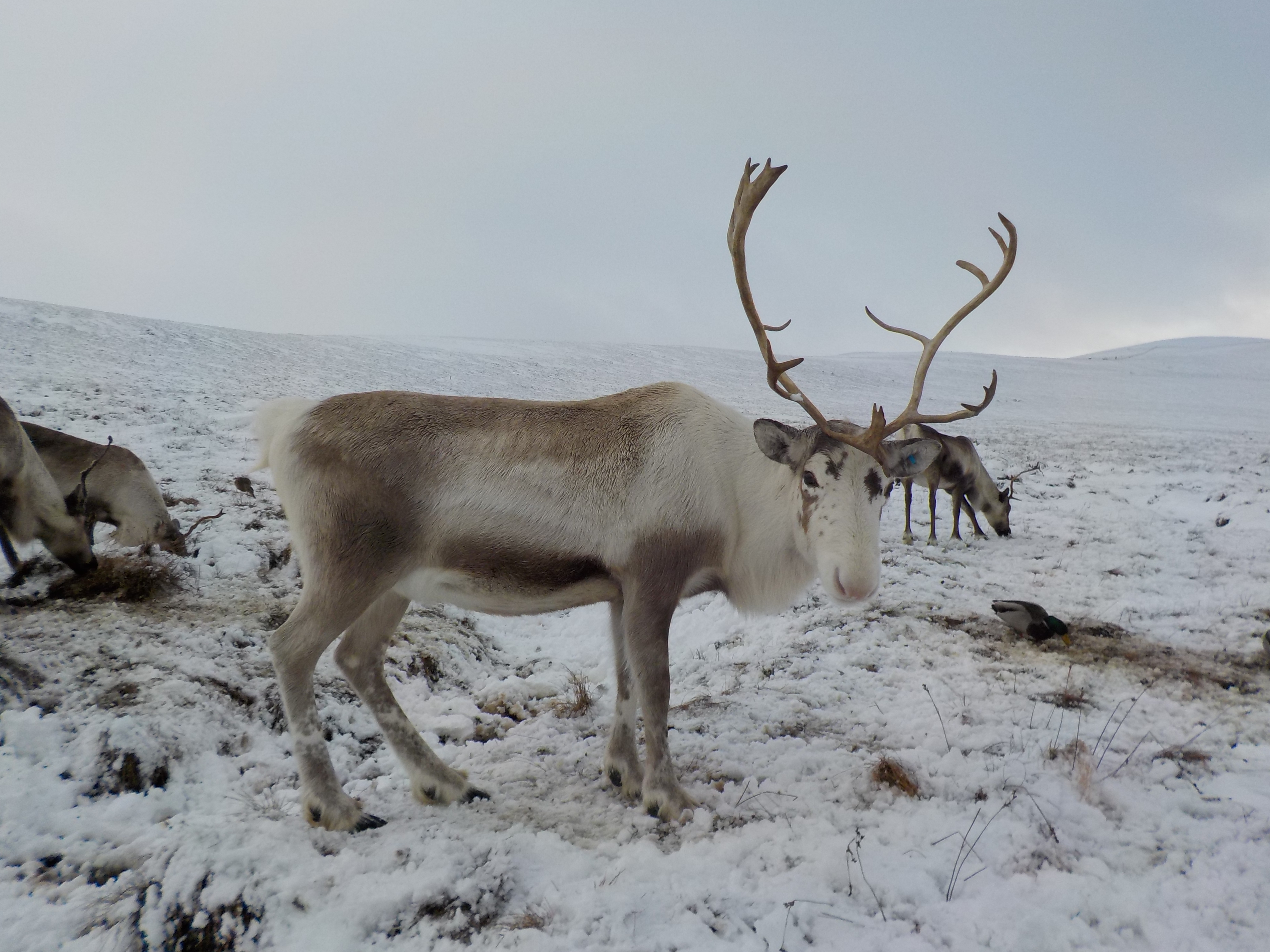
After a few weeks of being closed at the start of each year, when we re-open in early February we run our Hill Trips daily (weather permitting), but until late April these are to our free-range herd rather than to the enclosure that we use from May – December. In the winter season we have an age restriction on the Trips with our minimum age being 4 years old. We also recommend against younger children (aged 4 – 11) coming at this time of the year, instead recommending a visit from May onwards.

Why? I know a lot of people will have visited from February to April before with a toddler, and had a wonderful time. However, the Cairngorm winter can be extreme, and as we just don’t know until the day if it will be a pleasant bluebird day, or gale force winds with a wind chill of -20, we need to be sensible about when and if it is safe for little children to participate.
Small children tend to struggle with the weather more than adults, just because they’re wee – this isn’t a criticism of their toughness, just an observation from the years we’ve been running Trips. Indeed, for a large number of our previous Hill Trips in this season we have had to restrict them to “adults only” due to the weather or distance – safety has to be our first priority. We have to be realistic that when folks are booking ahead, it is unfair to everyone to then have to cancel their Trip on the day.

Along with the weather, there is also the difficulty and length of the walk. In the free-range season this can be four or even five times the distance of the walk to the enclosure, meaning that we are out on the hill for much longer. Younger kids often find these longer distances tougher (again no criticism of their ability, just an observation of their smaller legs and reserves) and struggle to keep up with the group, which then leads to the rest of the people getting cold as we stand waiting. Little kids in backpacks often struggle even more, as they are stationary and not generating any muscle warmth. There is also the added risk of the parent slipping with them, resulting in injury.
In addition, the area has been so much busier in the last few years, and as a result we are needing to take our free-range Trips further and further to find a quiet spot where the reindeer are less likely to be disturbed by passing dogs. It is also trickier now that we take advance bookings as it means almost all tickets are sold before the day itself – in the past we used to only sell tickets on the day once we opened at 10am, at which point we already knew what the weather was like up on the mountains. That meant we could literally look people up and down as they entered the shop and judge ourselves whether they were adequately dressed for the current conditions – before selling them tickets. Unfortunately Hill Trips are just so oversubscribed now that advance bookings are our only option.

We know our decision to not allow tiny children in to take part in the Hill Trips is a disappointment to some, so as an alternative we run ‘Winter Herder Talks’ here at the Centre in the Paddocks on afternoons (through the February half term). From 1.30pm each day you will have the opportunity to meet some of our beautiful reindeer and learn all about them from one of our herders. The Paddocks is usually a self-guided experience (and will remain so from 10am until 1pm), but with a herder available in the afternoons to share their knowledge of the reindeer as a species and as individuals, it gives a much more in-depth experience – providing a good alternative for families with small children. We are still delighted to take all miniature children on the Hill Trips from May to December, when the walk (and generally the weather) is more predictable and manageable.
Andi






























